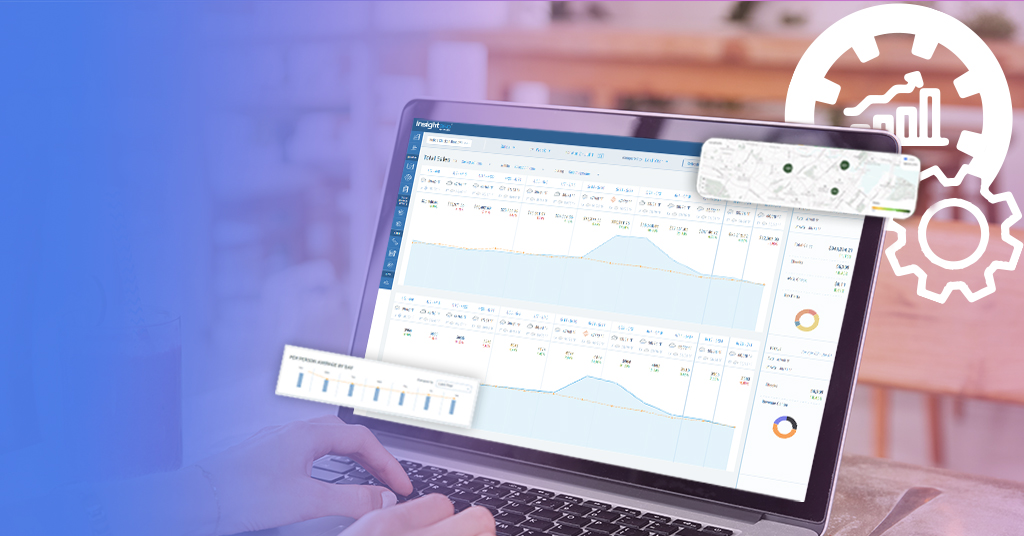Key Restaurant Performance Metrics Every Owner Should Track on Their Dashboard

Running a successful restaurant is not just about serving delicious food and providing a great experience for your customers; it’s also about making informed decisions based on data and continuously improving your operations. With so much data being collected daily, it is hard to be sure you are staying on top of all the information. Finding an effective way to manage operations, track the important metrics, and ensure you have the right information to make key decisions is critical to running an efficient operation.
Restaurant analytics and reporting can be very powerful, when used correctly, to streamline operations and realize improved restaurant financial management. Having a dashboard with the ‘right’ data at your fingertips will help you better manage operations and make your life easier.
Below are key performance indicators for restaurants or the essential restaurant performance metrics that should be front and center on your restaurant dashboard.

1. Sales Metrics
- Total Sales: Tracking your daily, weekly, and monthly sales is a crucial part of restaurant accounting and proves useful in identifying revenue trends and peak hours, allowing you to optimize staffing and inventory accordingly.
- Average Check Size: Understanding the average spend per customer helps you tailor your menu and pricing strategies to maximize revenue.
- Sales per Square Foot: This metric measures the efficiency of your space utilization and can guide decisions related to seating, layout, and space management.
2. Inventory Metrics
- Food Cost Percentage: Inventory management for restaurants or calculating the cost of ingredients as a percentage of total food sales is essential for managing your profitability and optimizing menu pricing.
- Inventory Turnover: Monitoring how quickly you’re selling and restocking inventory ensures you maintain fresh ingredients, reduce waste, and minimize carrying costs.
- Waste and Spoilage: As part of food cost control in restaurants, tracking food waste helps identify areas for cost reduction and sustainability improvements, benefiting both your bottom line and the environment. This is a key aspect of inventory management for restaurants.
3. Labor and Staff Metrics
- Labor Cost Percentage: Restaurant accounting and restaurant financial management are incomplete without this data. Analyzing labor costs as a percentage of sales ensures you’re effectively managing staffing expenses in relation to your revenue.
- Employee Turnover: High turnover can indicate workplace issues, so tracking this metric helps improve staff satisfaction and retention, ultimately affecting service quality.
- Sales per Labor Hour: This data can help you with staff scheduling and labor cost optimization. Assessing staff productivity through this metric ensures that you’re getting the most value out of your labor costs.
4. Customer Satisfaction Metrics for Restaurants
- Customer Count: Monitoring the number of customers per day helps you understand demand patterns and optimize staffing levels for peak and off-peak periods.
- Customer Retention Rate: Measuring how many customers return indicates the effectiveness of your service and customer experience, which are essential for building loyalty.
- Customer Satisfaction Scores: Gathering and analyzing feedback on customer satisfaction metrics is central to restaurant analytics and reporting helps you identify areas for improvement and enhance overall service quality, ultimately ensuring happy, returning customers.
5. Financial Metrics
- Profit and Loss: Analyzing your restaurant’s overall financial health is critical for making strategic decisions and long-term planning.
- Cash Flow: Ensuring you have the necessary funds for day-to-day operations prevents liquidity problems and disruptions in your restaurant’s functionality.
- Break-Even Point: Determining the level of sales needed to cover costs helps in setting pricing strategies, managing expenses, and ensuring profitability.
6. Loss Prevention Dashboards
- Voids: Tracking voided transactions helps prevent unauthorized voids or errors that could impact revenue and financial accuracy.
- No Sales: Monitoring instances of no sales helps identify discrepancies or suspicious activities at your point-of-sale systems.
- Discounts and Comps: Keeping an eye on discounts and complimentary items is essential to prevent misuse and ensure that your revenue isn’t compromised.
By tracking these essential metrics on your restaurant dashboard, you’ll gain valuable insights into your restaurant’s performance, identify areas for improvement, and make data-driven decisions that can lead to increased profitability and customer satisfaction. A well-designed dashboard provides a comprehensive view of restaurant performance metrics, and consequently, of your restaurant’s operations, helping you stay competitive and successful in a dynamic industry. Interested in learning more? Download this handout for an introduction to Insight360, our flagship product that is revolutionizing restaurant businesses for our countless clients.
Learn more about revenue tracking, efficient restaurant accounting, and how leveraging restaurant analytics and reporting can help optimize operations and improve restaurant financial management at Insight360.
Discover a New Level of Insights
Elevate your business with our free demo and discover the transformative potential of our product.